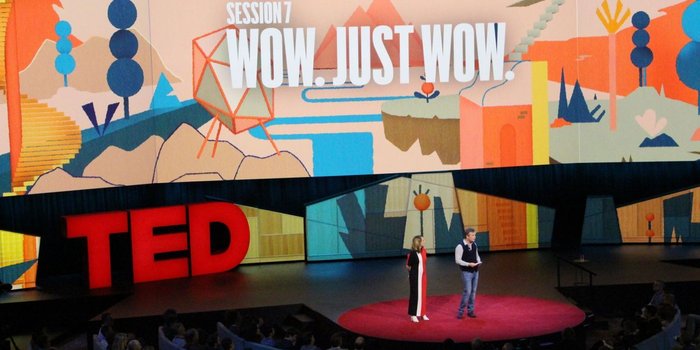And because we are wired to engage, the better the story, the deeper the connection. Read on to learn why it can be so effective and for some of Stoetzel’s top tips for using stories in presentations for maximum impact. Stoetzel says the team at TED actively works with and supports speakers to make sure they center their talks on a single, clear idea. It forces speakers to express their ideas in a short time span, helping to keep the audience engaged and the talk focused. However, to be truly engaging for an audience, the story must first mean something to the speaker. When a certain topic or point sparked excitement, Stoetzel would then work with the speakers to develop and incorporate engaging stories into their talks that could help convey their passion about those specific things to the audience. “It’s what you want to leave them with.” Again, using TED Talks as an example, Stoetzel relates how the speakers always have a specific message in mind and a target audience. Incorporating storytelling into presentations can help speakers demonstrate why they care about the content of their presentation -- and why the audience should, too. Storytelling, when delivered thoughtfully and at the right moment, can help speakers make emotional and lasting connections with their audiences. Make eye contact -- it helps with nerves.
Cultivate your own storytelling technique to create an engrossing talk for any audience.

Opinions expressed by Entrepreneur contributors are their own.
Storytelling is a tradition as old as humanity itself. Stories unify us, drawing us out of our world and into that of someone else. We tell stories to connect, to remember, to entertain and, ultimately, to communicate. And because we are wired to engage, the better the story, the deeper the connection.
Kelly Stoetzel is the head of conferences at TED. In her former role as the media organization’s director of content, Stoetzel worked closely with speakers to cultivate and refine the ideas and content used in their TED talks. She says the backbone for many great presentations — including TED Talks, which are a unique genre of presentations — is storytelling.
While the approach may not be right for every presentation — or presenter — storytelling is a powerful tool for captivating, inspiring and engaging audiences. Read on to learn why it can be so effective and for some of Stoetzel’s top tips for using stories in presentations for maximum impact.
Stories will make you stay focused.
TED Talks are crafted to be up to 18 minutes long and are delivered live on stage by a single person. Stoetzel says the team at TED actively works with and supports speakers to make sure they center their talks on a single, clear idea. Of course, not all presentations revolve around just one idea, but the concept of staying focused is the same.
Stoetzel says crafting shorter talks like speakers do at TED can work for any style of presentation. It forces speakers to express their ideas in a short time span, helping to keep the audience engaged and the talk focused. Storytelling is a way for presenters to achieve that focus — and to focus audiences on what they want them to absorb, she says.
Because stories ignite our imaginations and spark creativity, we cannot idly listen to stories — it’s impossible. They awaken our minds and inspire us to act. Stories stick with us. “We are wired to love stories,” Stoetzel says. “We crave them.”
Stories you are passionate about are the only ones that will stick.
Storytelling is an effective tool for conveying ideas; it also captures and keeps the audience’s attention and plays an important role in helping a concept or idea to really sink in. When engaged in the story, the audience is more likely to remember the moral behind it. Or, in the case of many presentations, to remember and act upon the presentation’s…

COMMENTS